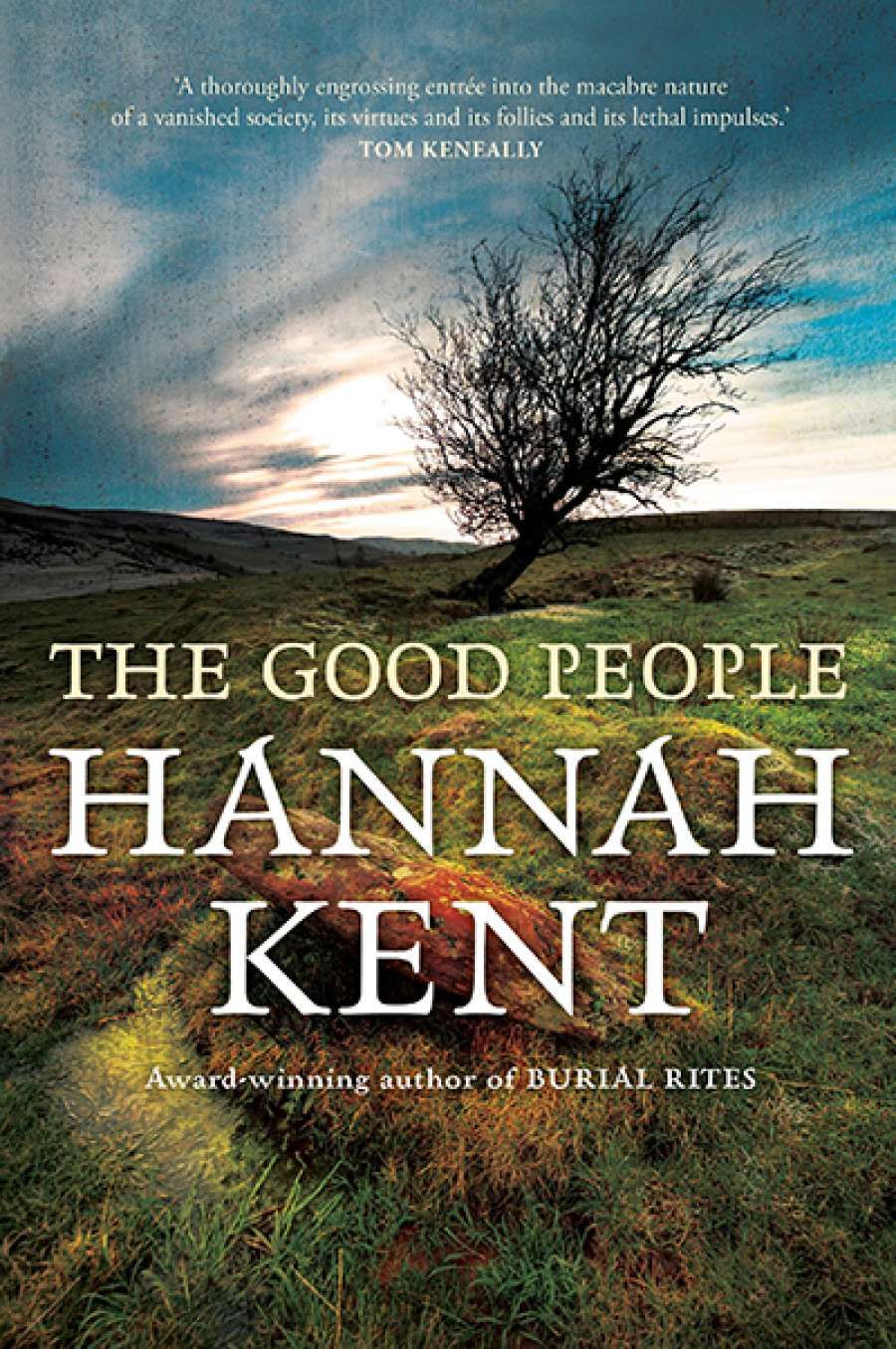
- Free Article: No
- Contents Category: Fiction
- Custom Article Title: Amy Baillieu reviews 'The Good People' by Hannah Kent
- Custom Highlight Text:
After reading her début novel about Agnes Magnúsdóttir, the last person to be executed in Iceland, no one is likely to pick up a book by Hannah Kent expecting a frothy comedy ...
- Book 1 Title: The Good People
- Book 1 Biblio: Picador $32.99 pb, 384 pp, 9781743534908
The novel opens as the unfortunate Nóra Leahy is confronted at her cabin in a remote Irish valley by two local men carrying the body of her beloved husband, Martin, who has 'collapse[d] at the crossroads where they buried suicides'. Now she must look after their grandson, Micheál, alone. Foreshadowing later developments, Nóra's first thought is that the body 'could not be her husband's' but must be 'a changeling'; her second is to move Micheál from the cabin so that when the new priest and the 'quiet, close folk' of the valley arrive for the wake they won't be 'gawping and gossiping over him'.
Micheál is a difficult, 'ill-thriven' child. Delivered into Nóra and Martin's care by his poverty-stricken and recently widowed father, the previously 'normal, healthy' four-year-old has become 'dreadful thin' and can no longer speak or walk. At first, Nóra believes he has simply 'mouldered' from the cold and hunger he suffered as a toddler, but, after Martin's death, a series of events, combined with her own grief, leads Nóra to believe that Micheál is not her grandson but rather a fairy substitute.
The inevitably tragic story is told chronologically from the perspectives of the three main characters: the widowed Nóra, submerged in grief and increasingly relying on the alcoholic comforts of the poitín bottle; Nance Roche, an old woman who lives alone in the forest by the river Flesk and who is said to have 'the knowledge' from the Good People themselves; and Mary Clifford, a fourteen-year-old hired by Nóra after Martin's death to help with Micheál. These three women are all, in their own ways, outsiders in the valley.
Kent brings the bitterly cold winter landscapes to life with flair and precision. As in Burial Rites, she does not shy away from the less-than-bucolic realities of nineteenth-century rural life: mud, cow shit, and even the practical housing adjustments necessary when sharing a small, enclosed space with a goat. Her characters are nuanced and sympathetically handled (with only one perpetrator of domestic violence appearing as a one-dimensional villain). She evokes the terrors of hunger, loneliness, cold, and isolation.
 Hannah Kent (photograph by Lauren Bamford)Her descriptions can be startling (rosary beads 'bauble' Nóra's skin into welts, and she feels later that 'her soul was grinding itself into powder under the weight of her own unhappiness'), but also melodramatic (such as when lightning flashes light up Nance's face as she greets Nóra); sometimes they veer towards the indulgently lyrical and alliterative. The images of rising waters and drowning that ripple through the text can be heavy-handed; and even scenes of children playing and picking berries are given a macabre twist. Kent evidently relishes the inventiveness of Irish idiom; her descriptions of Micheál are particularly creative and affecting as she emphasises his difference and extreme vulnerability.
Hannah Kent (photograph by Lauren Bamford)Her descriptions can be startling (rosary beads 'bauble' Nóra's skin into welts, and she feels later that 'her soul was grinding itself into powder under the weight of her own unhappiness'), but also melodramatic (such as when lightning flashes light up Nance's face as she greets Nóra); sometimes they veer towards the indulgently lyrical and alliterative. The images of rising waters and drowning that ripple through the text can be heavy-handed; and even scenes of children playing and picking berries are given a macabre twist. Kent evidently relishes the inventiveness of Irish idiom; her descriptions of Micheál are particularly creative and affecting as she emphasises his difference and extreme vulnerability.
The world Kent depicts is richly and convincingly layered with superstition, ritual, and religious belief. Few of the valley dwellers question the idea that Micheál has been replaced by a changeling. Kent touches on the wider societal and political context of the story, but aside from a brief section towards the end the narrative is confined to the 'fertile crucible' of the valley. Knowing that The Good People is based on real events makes for an uncomfortable reading experience and it is difficult to suspend modern awareness and sympathies in order to accept the world as it is seen by Nóra, Nance, Mary, and their neighbours – a world in which fairies are a fact of life and where threatening a changeling might be your best chance to have your own child returned, unharmed and healthy. A few instances where it seems as though magic might actually be taking place contrast awkwardly with the realism of the rest of the narrative.
In the end, the reader is necessarily another kind of outsider, bearing witness to the muddy realities of the world that Kent has conjured, but unable to fully enter into them.


Comments powered by CComment